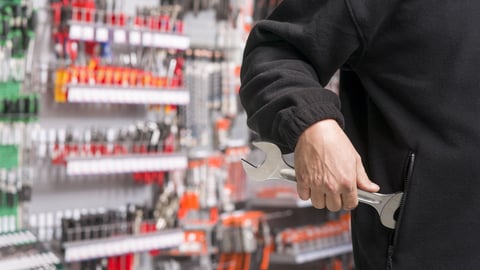Ace tackles loss prevention
ORLANDO – Anecdotal evidence that shoplifting is on the rise was on display here during a presentation on loss prevention tactics. The session was well attended by about 100 hardware retailers.
Matt Harper, loss prevention manager for Ace, kicked off his presentation with statistical evidence that shoplifting was growing across all of retail. Numbers from the National Retail Federation show a 26.5 percent increase in organized retail crime, and an 80 percent increase in non-shoplifting-related violence in stores.
In the bigger picture, the total estimate for shrink (63 percent of which comes from losses unrelated to shoplifting) stood at $94.6 billion in 2022, way up from pre-covid levels of $60 billion to $65 billion
Deter, detect, respond
Harper, a seven-year Ace veteran who also has eight years of asset-protection experience from Target Corp., is a believer that efforts in prevention are more important, more successful and far less dangerous than efforts to confront shoplifters. Active confrontation of shoplifters, he says, introduces high litigation risk. “Ask yourself: do you have a loss prevention strategy, or a loss-reaction strategy,” he said.
There’s no fool-proof strategy to stop shoplifting. But there are approaches to minimize it.
First up: a combination of layers of protection inside and outside the store (and in some cases on the product itself) along with three specific strategic approaches:
• Deter—Discourage criminal and disruptive activity. Mitigate events before they happen.
• Detect—Leverage technology and training to identify threats at an early stage. Discovery of events leads to increased likelihood of deterrence.
• Respond—Utilize multiple solutions (people and technology) that complement one another. Data-driven decisions regarding use of limited resources.
Harper observed that many retailers – particularly small, independent retailers—struggle to communicate their policies. In other words, if you ask a front line worker what’s the store policy around the handling of actual and potential acts of shoplifting, many won’t know.
“A lot of times, it’s kind of like the wild West,” he said.
Often good retail best practices are also good loss prevention best practices: clean stores, bright lighting, tidy shelves and employee interaction greeting and serving customers have a chilling effect on theft.
In thinking about their loss prevention policies, retailers should walk their stores from the perspective of a shoplifter, identify gaps in the layers of security. Also, consider emerging technologies – cameras, public view monitors, EAS towers at exit and entry—as force multipliers.
Other observations from the LP expert:
• Currently ranked number one on the thieves shoplifting list: Power tool batteries.
• Not for every business, but body cameras have worked for retail employees at REI in San Francisco. This tactic was driven by in-store violence. “Is it an abrasive way of solving a problem? Yes,” Harper said. “But is it solving a problem? Yes.”
• Tip: Use code words in store announcements to watch shoplifting suspects: “Bob, you have a call on line six.” Translates to “Shoplifting suspect in aisle six.”
• As big boxes (Walmart, Target, Home Depot and Lowe’s) continue to invest millions in loss prevention tactics and technology, shoplifters will naturally flow to independents where sophisticated LP is absent. “I’m not fear mongering,” he said. “It’s already happening.




